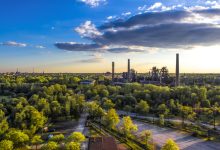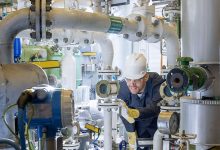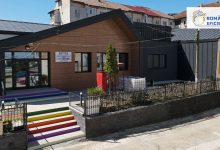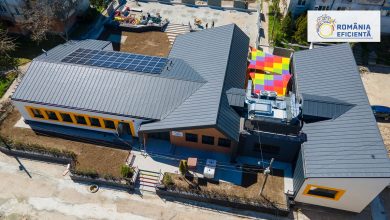Good Practice Models: ‘Romania Eficienta’ Programme
In recent years, in the spirit of general strategies and efforts to limit environmental pollution and greenhouse gas emissions into the atmosphere in order to limit global warming as drastically as possible, sets of measures and regulations have been adopted to implement as widely as possible the use of renewable energy sources and energy efficiency technologies. In this context, the principles of new buildings only under NZEB (Nearly Zero Energy Buildings) regulations have also been adopted, with new buildings being designed to have near-zero energy consumption. At EU level, it has been taken into account that about 40% of final energy consumption and therefore a significant share of greenhouse gases emitted into the atmosphere is accounted for by buildings.
Largest energy efficiency programme in buildings nationwide
“Liliesti” Secondary School in Baicoi (Prahova County) is the second educational building to be upgraded to the near-zero energy building standard (NZEB) through ‘Romania Eficienta’, the largest national building energy efficiency programme, run by the Energy Policy Group (EPG). The total investment amounts to approximately €1.6 million, supported by OMV Petrom and including support from Siemens Energy, which provided part of the heat pumps needed to replace the heat generation system.
Built in 1980, the “Liliesti” Secondary School in Liliesti Baicoi faced problems that many schools in the country have. Low thermal insulation led to high energy losses and high bills. The inefficient heating system did not allow temperature control, leading to overheating or cold in some classrooms. Rainwater infiltration has created conditions for damp in some classrooms. The electrical installation was also old and undersized, and the lighting system was of poor quality. Last but not least, the lack of a ventilation system often led to poor indoor air quality. So, the school needed extensive modernisation work.
What rehabilitation works have been carried out in this educational unit, reports Sorin Vranteanu, administrator of Magon Instal Construct, who led the construction team that renovated the school.
“Through the ‘Romania Eficienta’ programme, this energy inefficient educational building was transformed into a high energy performance building. The NZEB standard energy renovation works included: complete refurbishment of the plant room, replaced with a new high-performance plant, supplemented with a heat pump system that will ensure an optimal temperature for the learning process, installation of a state-of-the-art LED lighting system, refurbishment of the facades by applying a layer of thermal insulation, replacing the joinery with energy-efficient low-e triple-glazed windows, insulating and waterproofing the terrace, installing photovoltaic panels to produce green energy, insulating the basement, renovating all electrical, plumbing and heating installations. 18 heat recovery air ventilation units have also been installed to provide optimal air for learning in all classrooms, and punctual air filtration units have been installed in adjacent classrooms.”
Lack of enveloping and degraded joinery used to lead to hefty heating and electricity bills. Now the problems have been fixed and the savings will go towards providing modern, digitised education.
Renovation through the ‘Romania Eficienta’ programme run by the Energy Policy Group with the support of OMV Petrom makes a big difference not only to the environmental conditions, such as temperature, ventilation, and lighting, but also to the financial effort required to run the school. The optimal indoor atmosphere will be achieved at a low cost and the money needed for energy can be directed towards other necessary purchases for children.
Thus, the renovation of this school through the ‘Romania Eficienta’ programme is indeed an example: learning conditions are radically improved, to the benefit of both teachers and students. All of them will enjoy optimal conditions for their teaching activities – clean air, adequate lighting, thermal comfort both in the cold season and in summer, with energy efficiency at high standards. In addition, it can become a model for other administrative structures in the country.
“The NZEB standard is an innovative one for the Romanian market and there is a need for best practice models to help implement it. We want our projects to inspire as many similar investments as possible,” underlines the representatives of the ‘Romania Eficienta’ programme.







